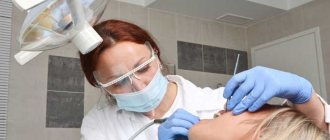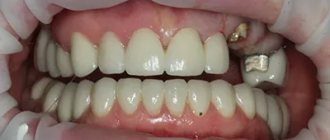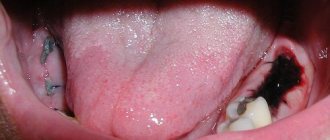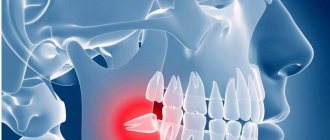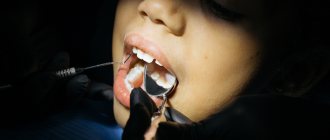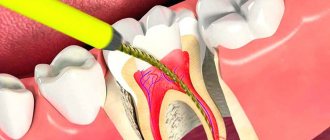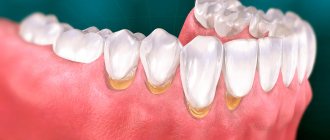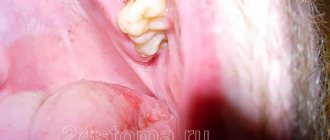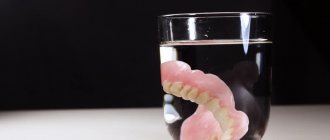From this article you will learn:
- whether wisdom teeth are treated or removed,
- indications and contraindications for treatment,
- Is it possible to remove a wisdom tooth - while it has not yet erupted.
Wisdom teeth are called eighth teeth - according to the serial number in the dental formula (counting is from the central incisors, respectively, for each half of the dentition of the upper and lower jaw). There are four wisdom teeth in total, and they always begin to erupt in the jaw later than all other teeth in the permanent dentition - usually between 18 and 21 years, although in some cases this can happen at 14 years, and even after 40 years. Is it necessary to remove wisdom teeth since they cause so many problems for most of their owners?
To remove or treat a wisdom tooth is determined in dentistry according to a number of criteria. For example, the most important of them is whether there is enough space in the dentition for their normal eruption. After all, for example, if the length of the lower jaw is insufficient, then the lack of space in the dentition will certainly cause their difficult eruption, accompanied by inflammation of the gums and pain. But that's not all, because... the constant pressure of a wisdom tooth trying to erupt on the 7th tooth in front is highly likely to lead to displacement of the teeth and the occurrence of crowding in the anterior sections of the dentition.
Eruption of wisdom teeth –
But very often the question: is it worth removing wisdom teeth - is asked in relation to already erupted, for example, partially destroyed eighth teeth. Whether such wisdom teeth are treated depends, for example, on the correct position of the tooth in the dentition, or on the presence of an antagonist tooth (with which the closure occurs), etc. Moreover, the opinion of dentists of different specializations may differ radically. For example, when you visit a dental surgeon, the doctor may immediately recommend that you remove it, just so as not to sit idle. The same applies to dental therapists.
It is best for the decision on the need to remove or treat a wisdom tooth to be made by an orthopedic dentist (prosthetist), because the most important thing is to make this decision precisely from the point of view of the need for this tooth for prosthetics in the future. As for the issue of removing figure eights if their eruption is difficult, it is advisable that such a decision be made by an orthodontist. Because, again, when you have an appointment with a dental surgeon, often such doctors do not even look at the length of the jaws, but immediately recommend removing the eights, although they could have erupted quite normally.
Content
- Reasons for the development of pathology
- Which doctor should I contact if my tooth has chipped?
- Activities before visiting the dentist
- Microprosthetics
- Place a crown on a chipped tooth
- When is implantation necessary?
Tooth decay is an unpleasant event that requires immediate response. This can happen due to injury, untreated caries, brittle teeth and other reasons. Any chips, even small ones, mean a violation of the integrity of the enamel. That is, the tooth becomes vulnerable, infection can enter and the destruction of the crown part can continue. The patient begins to feel discomfort and pain when exposed to hot and cold temperatures, sweet and sour. The sharp edge of the chip injures the soft tissue of the gums during chewing, and bacteria penetrating into the wound cause inflammation. To restore your tooth and avoid negative consequences, you should immediately make an appointment with a specialist.
What complications can there be?
The gradual destruction of the figure eight inevitably leads to the development of inflammatory processes, because a crown with large chips quickly becomes a breeding ground for harmful bacteria. In this case, the damage rapidly spreads deep into the hard tissues, moving to dentin and pulp. This situation is fraught with the appearance of acute symptoms: severe pain and the onset of suppuration processes. Urgent removal of the causative element is required, but such conditions significantly complicate the doctor’s task. If the cause is caries, the pathology can easily spread to the adjacent molar and lead to its destruction.
Reasons for the development of pathology
Damage can be caused by several direct or indirect factors. Determining the cause is an important aspect for proper treatment. Among these factors:
- Mechanical damage due to trauma.
- Chipping due to bad habits (biting nails, pens, and other objects not intended for this purpose).
- Reduced acidity of the oral cavity, which negatively affects the strength of enamel.
- Bite defects.
- Dental pathologies that have not received treatment.
- Remineralized enamel.
- Hormonal imbalances, changes during pregnancy.
- Frequent consumption of excessively hot or cold foods.
- Night grinding of teeth.
Growth period of eights
The average growth period for wisdom teeth is 18-25 years. But they may not erupt at all, and even their rudiments will not be formed inside the bone tissue. In some situations, they can form completely, but remain inside the bone. According to research, approximately 70-80% of the world's population still grows the outermost teeth.
Growing pains
Only some lucky people have wisdom teeth that grow completely, straight, and do not cause any trouble during eruption. Among the main problems that accompany their growth are the following:
- Impacted or semi-impacted teeth, which have formed completely inside the bone tissue, but have not erupted (or partially appeared). They can be vertical, horizontal, or even with their roots up. When positioned laterally, such teeth very often exert increased pressure on neighboring ones, which leads to acute pain,
- A gingival hood forms above the tooth: this is a small area of the mucous membrane that forms during the slow eruption of the tooth. The difficulty is that bacteria and food debris often accumulate underneath it, which are difficult to remove due to the fact that the tooth is very far away - it’s practically impossible to get to it. This causes acute inflammation, which often develops into purulent,
- dystopia or positional imbalance: eights do not have milk precursors, in addition, they grow at a time when the jaw bone has ceased to develop and form. Therefore, they often grow crookedly and do not stand in place. At the same time, they can overlap other crowns, overlap with neighbors, cause injury to the mucous membrane, which will complicate hygiene and provoke inflammatory processes,
- growth immediately with caries: they are very difficult to clean because they are located far away. Patients experience particular difficulties when the mucous membrane is inflamed, since cleaning in such situations is accompanied by acute pain.
In general, growth disturbance leads to a change in the normal functioning of the entire dental system. Soreness occurs, the patient often complains of pain when opening the mouth and moving the lower jaw. Due to pressure on neighboring teeth, they become displaced and cause malocclusion. A fairly common consequence is crowding of the incisors, which occurs precisely as a consequence of impaired growth of the figure eights.
Activities before visiting the dentist
Depending on the extent of the damage, the patient may feel discomfort from increased sensitivity and pain. If a sharp edge is formed after the chipping, it will scratch the gum, tongue, and cheek. Such damage is a favorable environment for infection. The sharp edge must be isolated as soon as possible. A tooth that has lost full enamel protection is also vulnerable to infection.
While waiting for a visit to the dentist, the patient can take a number of actions to minimize negative consequences:
- Do not put any pressure on the affected tooth or chew hard food on its side.
- Thoroughly clean the chipped area, avoiding the accumulation of food debris and plaque.
- Rinse with a soda solution (you can add iodine and salt).
- If your chipped tooth hurts, you can take a pain reliever.
PROMOTION
Hygienic teeth cleaning
2000 rub.
Structure
Externally, the “eight” is no different from other permanent molars; its uniqueness lies in the following:
- In most cases, teething occurs between the ages of 16 and 25;
- At the moment when the third molar finally appears, the remaining teeth have already taken their places on the jaw, leaving practically no free space. Accordingly, the eighth tooth has to push away its neighbors, which is not always possible;
- Wisdom teeth are extremely difficult to treat because dentists cannot always reach them. And most often, if problems arise with the “eights”, they are simply removed.
Microprosthetics for tooth restoration
To restore the aesthetics and full function of a damaged tooth, restoration is used. If the chip is small, the problem can be solved using composite materials. For more significant damage, microprosthetics would be an excellent option. Inlays, which serve as microprostheses for restoring teeth, are made from composite materials based on an impression. They are durable and aesthetic, and are widely used in modern dentistry.
Micro-prostheses also include veneers. These are thin plates that are attached from the outside to the prepared teeth (in the frontal zone of the dentition, covering the front part and lower edge of the tooth). Veneers are also made from impressions and are effective in correcting most aesthetic problems. The plates are mainly made of ceramics and zirconium dioxide.
If the injury affects the pulp, the specialist treats the canals, and then fills or installs a microprosthesis.
Hood
As the figure eight erupts, the gums hang over it, forming a pocket, also known in dentistry as a “hood.” Food particles accumulate in this gum pocket, creating fertile ground for the proliferation of harmful bacteria. Sometimes inflammation begins in the “hood”, which can spread to adjacent areas - gums, cheeks, etc. In this case, you should not deal with the problem yourself. Seeing a dentist immediately will help avoid serious complications.
The doctor will perform a hood excision, a small operation in which the gum overhanging the erupting tooth is removed under local anesthesia. The cavity is cleared of purulent discharge and washed with an antiseptic. After the procedure, rinsing with antibacterial drugs may be prescribed, and in the most difficult cases, antibiotics may also be prescribed.
Installing a crown on a chipped tooth
In case of significant injuries, if it is impossible to restore the crown part of the tooth, a new tooth can be obtained using prosthetics. The prosthesis - crown - is fixed on the root of the tooth if this part remains healthy and strong. Different types of crowns are used depending on the material of manufacture:
- Metal ceramics are the most inexpensive option. The design is durable due to the metal base, and aesthetic due to the ceramic layer. Such dentures become an ideal option for budget restoration of teeth in the chewing area. Installation of metal ceramics in the frontal area is possible, but the tooth will not look natural due to the lack of transparency.
- Zirconium dioxide is a modern high-tech material that has both the strength and aesthetics of natural teeth. Such crowns are made using computerized technology and are practically indistinguishable from natural teeth in appearance. They refract light correctly and have a certain degree of transparency, similar to tooth enamel.
- Ceramic crown. This option is only suitable for the front teeth, since the structure is not strong enough to withstand the full chewing load. Ceramics look very aesthetically pleasing.
What to do after deletion
After any surgical intervention, you should follow all the dentist’s recommendations, as well as:
- do not eat for 2 hours after the procedure;
- cool the soft tissues of the face in the projection of the removed root;
- stop smoking for two days;
- take prescribed pain medication;
- make antiseptic applications;
- watch to see if other teeth are crumbling.
Sometimes after complex extractions, dentists prescribe antibiotics to patients.
This appointment cannot be ignored - after a tooth is pulled out of the socket, a focus of infection forms in it, which can only be extinguished with the help of medications.
The following video schematically shows different methods for removing incisors, canines, molars and premolars of the lower and upper jaw.
When is implantation needed?
Implantation is required if the root part of the tooth is damaged and cannot be used as a support for a prosthesis. This can happen when the side wall of the tooth is broken (below the gum level), deeply damaged by caries, root fracture, etc. In these cases, the tooth is completely removed and replaced with a titanium rod - an implant. Crowns are also placed on implants. These are metal ceramics and zirconium dioxide; ceramic prostheses are not used due to their high fragility.
Myth four: electric brushes and irrigators loosen fillings
Modern technologies have brought a lot of doubts and worries into human life. For example, people believe that active dental care using electric brushes and irrigators can ruin the situation with fillings.
“Here you need to know that a similar situation took place, but in a very short period of time. Then two factors coincided: the first composite materials with not the best physical and chemical properties were on the market, and ultrasonic toothbrushes had just appeared, which operated at a wave frequency at which really old fillings swayed,” says Ilya Antonov.
Manufacturers of brushes responded very quickly to this problem, changing the frequency of the oscillation wave to a more gentle one without losing the quality of cleaning, plus the properties of composites improved, and for a long time, for reasons related to the use of electric brushes and irrigators, fillings do not fly out, says the dentist.
Chew less often! Do I need to remove wisdom teeth and is fluoride toothpaste harmful? More details
Prevention of dental diseases
A number of simple steps will help the patient keep his teeth healthy for as long as possible and reduce the likelihood of diseases:
- Careful hygiene, brushing teeth at least twice a day.
- Using dental floss and rinsing with special solutions.
- Attention to the condition of soft tissues and gums.
- Timely visit to the dentist if alarming symptoms appear, preventive examinations twice a year.
How to pull a tooth at home without pain
How to relieve toothache at home
In what cases does wisdom tooth treatment make no sense and must be removed?
- If the dentist has diagnosed “deep caries of the wisdom tooth,” it makes no sense to treat the disease at this stage. In this case, the tooth is simply removed.
- Figure eights affected by caries are removed if they are incorrectly located in the row of the masticatory-maxillary system.
- Extraction (removal) is carried out for chronic recurrent pericoronitis - if the patient regularly has inflamed gums around the eighth tooth.
- The figure eight should be removed if it injures the soft tissues of the inside of the cheeks. This happens when wisdom teeth are incorrectly positioned.
- Treatment of eighth teeth is not carried out if the patient cannot fully open his mouth or there are other obstacles to the procedure.
- Caries will not be treated if the third molars violate the position of the dentition and cause crowding of the canines and incisors. In such situations, the doctor often removes the figure eights and then performs orthodontic correction of the displaced teeth.
- Basal caries and cervical caries of wisdom teeth are also indications for removal in most cases.

